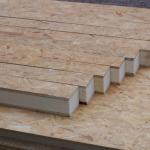How to choose a matrix for a camera
When buying a camera, no matter what: a professional class or an ordinary budget compact for shooting friends and family in nature, you want the pictures to be of high quality, and the device itself gives you as much freedom as possible. Knowing which matrix is better for a camera, you can not fall into a stupor in the store when you see two models of different brands that look the same, but cost very differently. It's all about the sensor, which is responsible for what kind of image will be obtained and how flexible the scope of using the camera will be for the owner.
Matrices of digital cameras are divided into two main types according to the semiconductors used and the technology for reading information.
- The type of CCD (CCD) is the most common. This is a fairly cheap technology, image information is read sequentially from each cell.
- CMOS CMOS sensors are more expensive, but more efficient in terms of speed, since they allow you to read data from all light-sensitive elements at once. Such sensors are installed in expensive cameras, since no manufacturer will pass by the chance to provide the user with the ability to shoot with very low shutter speeds, which in turn complicates the hardware and software complex.
Most consumer class cameras are equipped with CCD sensors. At the same time, a completely expected condition is set: to get really high-quality pictures in natural light (or in insufficient light), it is better to use a tripod, since the exposure time will be significant. Similarly, you won’t be able to take pictures extremely quickly, because it takes time to receive and process the image.
Some manufacturers solve the last problem quite simply: they equip cameras with a memory buffer. Frames are placed there before processing, when shooting is carried out in the so-called sports mode - a series in a short period of time.

Expensive cameras equipped with CMOS sensors allow you to take pictures "handheld" with low shutter speeds, have high light sensitivity and low noise level. With the help of such equipment, it is possible to carry out exposure metering, the autofocus time is reduced, of course, it is easy to take a good shot.
Another technology that is used in the most expensive photographic equipment is multilayer matrices. This is not another item in the list of "types of matrices". The photosensitive area of such devices consists of three CCD layers, each of which reads only one color. The resulting image quality is simply amazing. Equipment with this technology is specially marked: 3CCD.
The last thing worth mentioning is the technological dimensions of the matrices. CCD sensors can be made small, they are built on silicon elements. And CMOS matrices are quite large, which is another rational argument in favor of their use in expensive professional equipment.
Quantitative indicator of quality
When asking yourself which camera matrix is better, you can quickly get an answer without having to delve into technological features. Pay attention to the following characteristics:
- the declared number of megapixels in the camera characteristic;
- the effective number of pixels that responsible manufacturers indicate in the documentation for the camera;
- possible image sizes that can be taken with the camera.
Manufacturers of cheap camera models are often cunning, indicating, first of all, the dimension of the picture and exposing huge numbers as an effective advertising ploy. It does not speak about the quality of the resulting images. Types of camera matrices can be of different classes. However, if the sensor does not have sufficient resolution, large output images will have poor detail and high noise.
Even more about the quality of the camera will tell the ratio between the declared megapixels of the matrix and the number of effective points. This speaks directly to the optics used. If the hardware is made responsibly, the declared and effective number of pixels will be almost the same, which not only positively characterizes the selling price, but is also directly responsible for the quality of the images.
Light sensitivity and noise
The sensitivity of the matrix is another characteristic that describes the camera. It is worth buying a camera, focusing on the planned applications. Today, in the documentation in the photosensitivity column, you can find very high numbers - up to 51000 and more. However, this does not directly speak about the ability to take high-quality pictures. There are no recommendations on what should be the photosensitivity. Everything works like this:
- to obtain a good image, it is necessary to provide an exposure time, the time of which depends on the level of illumination and the photosensitivity of the matrix;
- in medium and low light, you have to use a tripod;
- if you want to continue shooting “handheld”, you can programmatically change the sensitivity level of the matrix in the camera settings.




